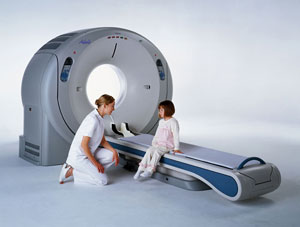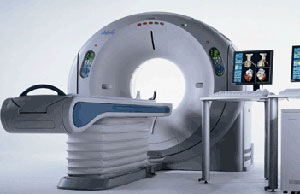Easier, quicker and more pain-free - General hospital Bel Medic purchased latest multi-slice CT scanner
 Sunday, 06.06.2010.
Sunday, 06.06.2010.
 19:01
19:01

General hospital Bel Medic has enriched its medical equipment with "the X-ray machine of the 21st century" - a modern Toshiba 64-slice CT scanner for the whole body. This multi-slice CT scanner of the latest generation gives very detailed and high-precision images of soft tissues, blood vessels and bones of the body (head, neck, chest, abdomen, pelvis, upper and lower extremities...).
It is most often used to rule out tumor or localized infection (abscess), blood vessel thrombosis, aneurysm, internal bleeding, and in case of trauma, muscle damage and bone fracture.
The use of this machine (computed tomography) represents a non-invasive diagnostic method. The examinations are simple, quick and pain-free. Complete CT scan of blood vessels (angiography) takes only few seconds, the same as CT colonography (virtual colonoscopy). In some cases, it can even replace invasive coronarography.

As people from Bel Medic explained to eKapija, this multi-slice scanner practically enables full-body scan, as well as the scan of all blood vessels, including coronary blood vessels that supply heart with blood.
The X-ray examination of all blood vessels is called angiography, while multi-slice coronarography is used when coronary blood vessels are scanned as well.
What does that mean for patients?
- When standard coronarography is used, a catheter must be introduced through the artery system to reach the coronary arteries, which is followed by injection of radiological contrast product. Coronary arteries filled with contrast then become visible by an X-ray machine and their anatomy can be analyzed. Based on that, the decision on the type of treatment is made.

- When multi-slice coronarography is used, which is a much less invasive technique, no catheter is introduced. Radiological contrast product is injected into a vein and it reaches coronary blood vessels through bloodstream. After that, the multi-slice scanner is used to produce images and make coronary blood vessels opaque. Scanning only takes few seconds and patient can go home very soon. Of course, it must be taken care of the indications for scanner coronarography, and the indications are provided by a cardiologist – says Dr. Ivana Petrović, a general practitioner and the Deputy Director at General hospital Bel Medic.
This machine can also be used for the diagnostic method popularly called "virtual colonoscopy", while its real name is CT colonography. Multi-slice scanner produces three-dimensional images of the colon (large intestine) and possible changes in it. It is a minimally invasive diagnostic method and it does not require either sedation or anesthesia, it takes less time, so that the patient can return to his/her usual activities the same day after the procedure. Just like the colonoscopy exam, which is done with the use of a fiber-optical instrument, the indication is set by a gastroenterologist. Virtual colonoscopy is of great use when endoscope can not pass through the whole large intestine due to the presence of a big tumor or something similar.
There are only few such machines in Serbia. The model that Bel Medic invested in is of the latest generation and it is even more modern that the one at the Military Medical Academy (VMA) in Belgrade. Bel Medic passed all the tests, it got the license from the Agency for Protection from Ionizing Radiation, and the first examinations have already been done.

About EUR 800,000 have been invested in the machine and equipping of the room it is situated in.
When asked how much the procurement of such valuable machines in the private sector can shorten the waiting lists for medical services in Serbia, the Director of General hospital Bel Medic, Jasmina Knežević, said the following:
- Surely it is a great chance for the health care system and, primarily, patients. About half of magnets and scanners are in the private possession and they represent unused resources. The main obstacle is the fact that patients must pay for the use of these machines in the private sector and the "queues" would definitely be shorter if the private medical institutions were included in the system of the Health Insurance Fund. That is something we all together must fight for - both doctors and patients, as well as the media. That is the only way for the state to be able to recognize the private sector as one of its own existing resources.
J.Đ.
 ACIBADEM BEL MEDIC Beograd
ACIBADEM BEL MEDIC Beograd
 Ministarstvo zdravlja Republike Srbije
Ministarstvo zdravlja Republike Srbije
 Republički fond za zdravstveno osiguranje Beograd
Republički fond za zdravstveno osiguranje Beograd


 Izdanje Srbija
Izdanje Srbija Serbische Ausgabe
Serbische Ausgabe Izdanje BiH
Izdanje BiH Izdanje Crna Gora
Izdanje Crna Gora


 News
News






